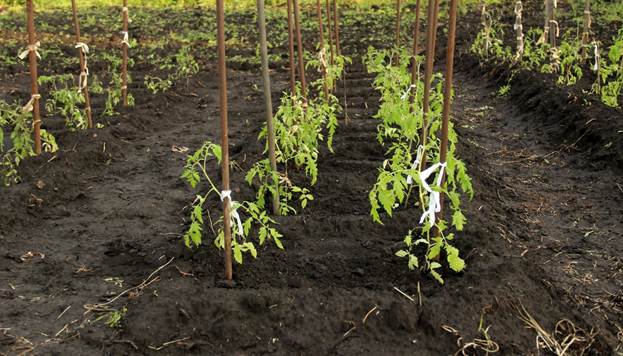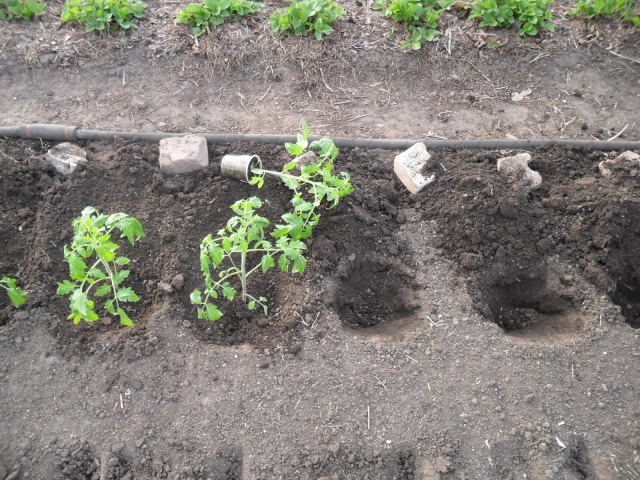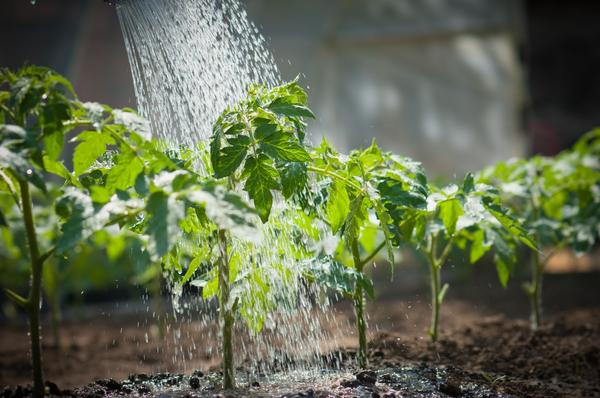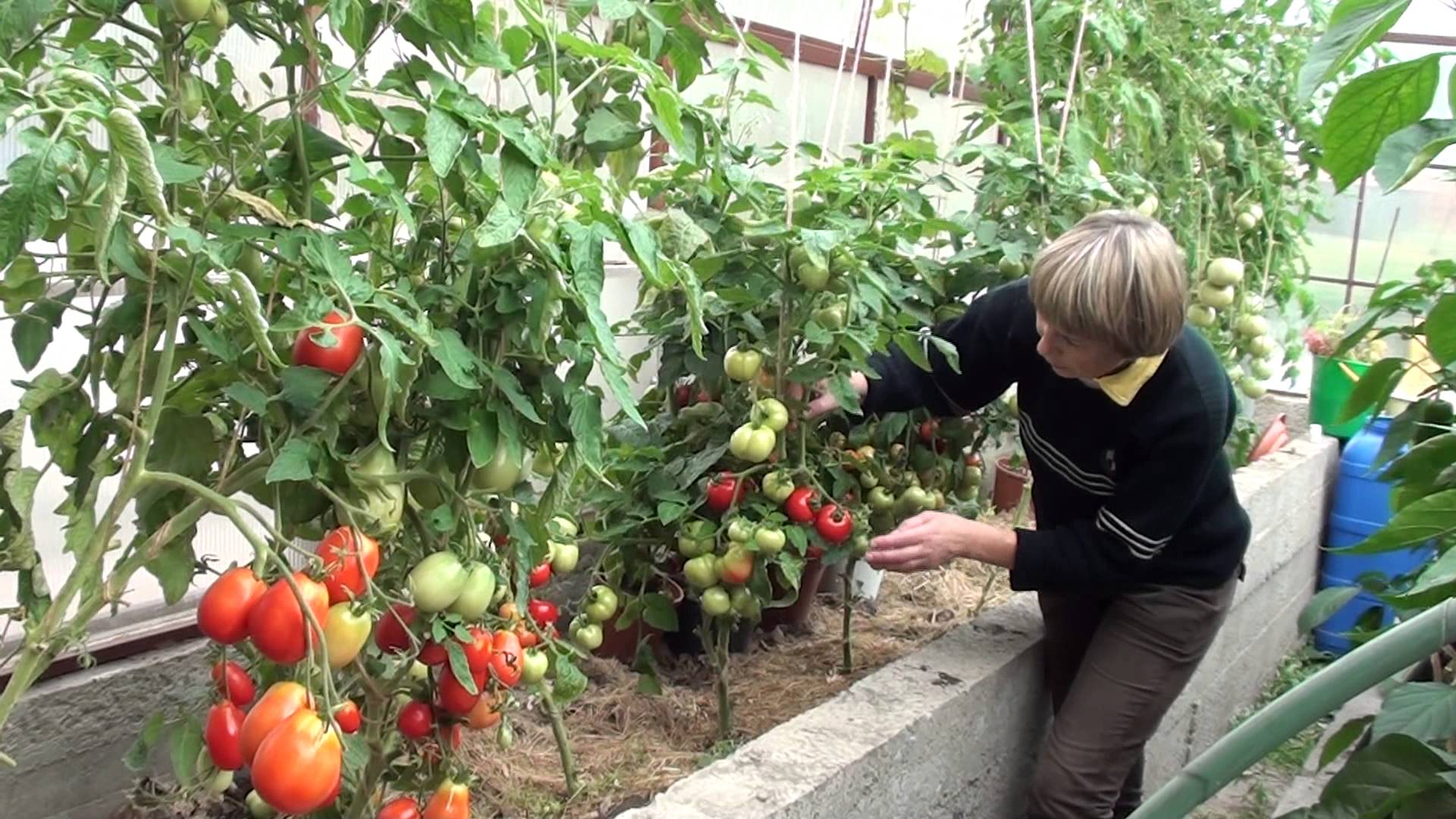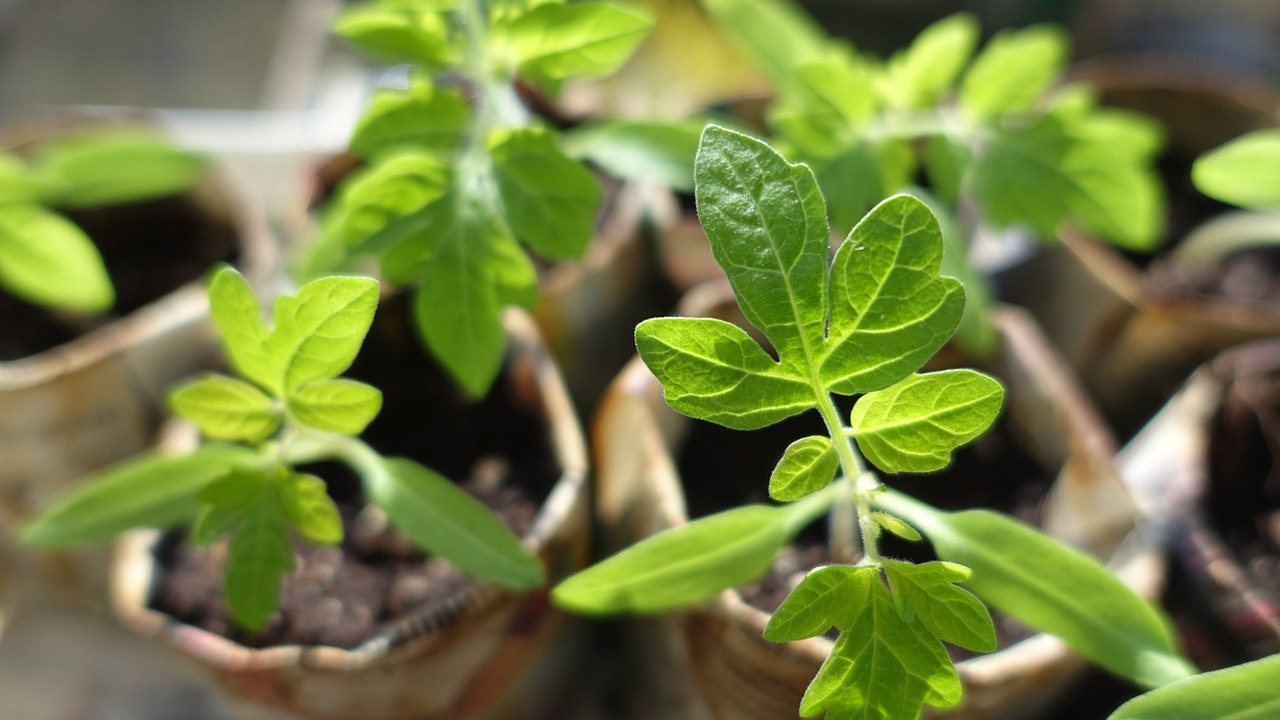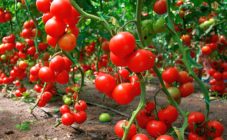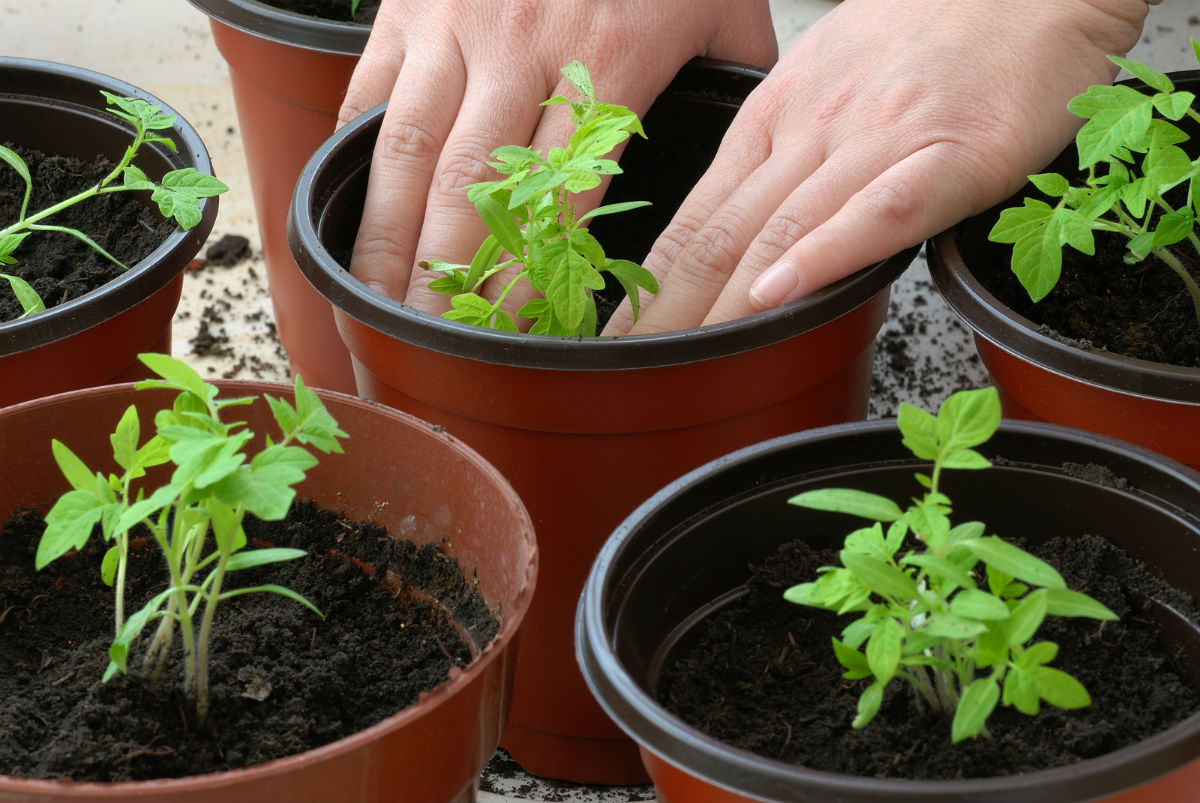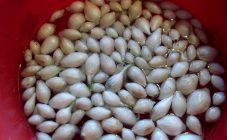Content:
To get a good harvest of tomatoes, it is necessary to take care of plants at all stages of their growth. Success largely depends on what to put in the hole when planting tomatoes. After all, it is the nutrients that give the bushes the strength for development and fruiting. The supply of fertilizers laid in the ground during planting of seedlings will provide the plants with the opportunity to take root well, grow strong and healthy.
How to prepare the soil for planting tomatoes
It is better to take a sunny place on an elevated flat area where there is no draft for a tomato garden in the open field. The culture is considered demanding on the soil. Sandy loams, abundantly fertilized with organic matter, are ideal for her.
The preparation of the beds for planting seedlings takes place in 2 stages.
In autumn, the soil is cleared of plant residues and debris, and then dug to a depth of 25 cm, turning the layer over. The structure of too heavy soil at this stage can be improved by adding sand. They get rid of increased acidity by adding lime during digging. At the same time, you need to fill the ground with manure, compost or humus.
In winter, the soil will freeze, as a result of which the larvae and harmful bacteria will die, and the fertilizers will later be evenly absorbed into the ground along with the melt water. If tomatoes will be grown in a polycarbonate greenhouse, it is recommended to replace the top layer of soil 5-7 cm thick.
In the spring, the earth is dug up again to make it friable and mineral fertilizers are applied (a mixture of nitrate, potassium chloride and superphosphate in the amount of 20 g / 20 g / 50 g per 1 sq. M is suitable). Loosening the soil will provide the horses with a good oxygen supply, which will affect the harvest in the most favorable way.
2-3 days before planting, the land is watered abundantly and covered with foil.
What fertilizers to put in the hole before planting seedlings
If tomato seedlings were grown in peat cups, nothing can be added to the hole before planting. In this case, the fertilizers that were introduced during the preparation of the soil and the nutrients that make up the cups themselves will be enough. Seedlings are not taken out of them, but planted in the ground just like that. In the ground, peat begins to decompose and gives nutrients to the roots.
Each experienced summer resident has his own recipes for such feeding. Many of the fertilizers are versatile and work well with each other. Here is what experts recommend to put in the hole when planting tomatoes:
- Wood ash is a top dressing containing such important minerals as potassium, magnesium, calcium, sodium. Some minerals are responsible for the growth of green mass, while others contribute to fruiting. It is enough to add a handful of ash to the hole for each plant.
- Superphosphate. The substance contains a significant amount of phosphorus in an easily assimilable form for plants.You need to throw it in the amount of 50 g per hole.
- Complex fertilizer Universal. Made on the basis of humic substances, which stimulate growth, relieve stress after transplantation, and increase plant immunity. It is enough to add 1 tbsp to the hole. l. fertilizers.
- Magnesium sulfate. It contains a lot of magnesium and sulfur. It has a positive effect on the taste of the fruit. Magnesium sulfate is especially useful as an additive to acidic soil.
- Biohumus. This is a biologically active natural fertilizer, which is a product of the processing of California worms. It is often recommended for use by agricultural specialists. Introduced in the amount of 100 g.
- Giant is another humic complex fertilizer. It has a long-lasting effect and is available in granules. It must be poured at the rate of 1 tbsp. l. per plant.
- Kemira Universal. It is a complex of essential minerals. The rate of use is 1 tbsp. l. per hole.
The recommended fertilizer dose should not be exceeded. An excess of them is no less harmful than a deficiency. This is especially true of industrial chemical fertilizers.
Folk ways
Some summer residents use unconventional fertilizers in the garden, which were used decades ago, when there was still no such choice of specialized preparations. They claim that tomatoes grow and bear fruit well if fresh fish is put in the hole before planting. This specific feeding will supply the plants with phosphorus, calcium, iodine and magnesium. Sprinkle it on top with a small amount of peat and then plant the seedlings. You can use ordinary river fish for this purpose.
When planting tomato seedlings, you can also add crushed eggshells to the hole, which are rich in calcium, copper, sulfur and almost three dozen more minerals. It is collected in advance and stored in a paper bag, placed in the refrigerator.
You can add onion peel to the hole under the tomatoes, it has bactericidal properties and will protect the bush from late blight and other diseases transmitted through the soil. And the banana peel, laid down during planting, decomposes and saturates the soil with potassium.
The ammonia will scare away the bear from planting and at the same time enrich the earth with nitrogen. Use 1 tbsp for a bucket of water. l. ammonia and water the wells with a solution before planting.
The yeast solution used when planting seedlings will help the plants adapt faster and take root in the soil. To prepare it, add 10 g of fresh yeast to 10 liters of warm water and leave to ferment for a day. In each hole, 0.2-0.3 liters of such feeding is introduced.
How to make a hole correctly
For tomatoes, tape planting is used, in which the holes are made in rows, parallel or staggered. Plants in one row are planted at a distance of 50 cm from each other (for spreading bushes, the distance is increased to 60 cm). It is best to "move" the seedlings into the ground in the early evening or on a cloudy day. A hole is dug up to a depth of 20-25 cm and of such a diameter that a clod of earth, along with the roots, fits freely in it.
Before planting seedlings, each hole should be shed with a solution of potassium permanganate. This allows you to disinfect the soil, ridding it of pathogenic microflora. Solution consumption per one seat - 1.5-2 liters. Instead of potassium permanganate, Trichodermin can be used to protect against disease. The seedlings are installed in the hole at a slope, this will contribute to the growth of additional roots and a greater yield of fruits. If the seedlings are grown in peat cups, they should be cut in several places.
After the roots are covered with soil, it is necessary to lightly compact the soil with your hands so that there are no air pockets inside, then the tomatoes will quickly take root in a new place. Then the plants are watered with water at room temperature. It is better to cut the leaves growing from below and tie each bush to a wooden peg, which will serve as a support until the plants get stronger.
On top of the planting, mulch with a thin layer of peat. Mulch will prevent pests and fungi from entering the soil, and will also prevent the soil from drying out quickly.
Tips from experienced gardeners
It is imperative to observe the crop rotation. Only then will it be possible to get a high-quality crop of tomatoes and avoid their diseases. If you plant the same crop in one place every year, the soil will be severely depleted, its acidity will be disturbed, pest larvae and pathogenic microorganisms will accumulate.
Quite good predecessors will be: carrots, beets, turnips, cucumbers, onions, radishes. Greens and legumes are also good.
In the process of growth, tomatoes consume quite a lot of nutrients, so pre-planting soil preparation cannot do without fertilization. Only a complete set of micro and macro elements will give an opportunity to get a bountiful harvest. Properly prepared compost has a positive effect on the composition and structure of the soil, therefore it is advisable to have a compost box on the site, in which organic waste in the form of food residues, cleanings, mowed weeds and grass will rot.
Mineral fertilizers must be dosed into the hole, taking into account the composition of the soil and its depletion. Overfed plants will grow large amounts of green mass to the detriment of fruit formation. It is better to use specialized complex preparations for tomatoes, in which all components have the correct ratio. The use of superphosphate will make plants strong and healthy, and magnesium sulfate will increase the sugar and starch content in the fruits, which will improve their taste.
If the summer resident did not have time to prepare humus, an infusion of rotted grass will help out. The cut greens are placed in a barrel, poured with water and left to ferment for 2 weeks. The resulting concentrated infusion is diluted in a ratio of 1:10 and introduced into the hole before planting 1 liter of top dressing.
Sometimes you can find recommendations to plant tomatoes in the ground at a distance of 30 cm from each other. It is better to increase this distance to at least 45 cm. Thickened plantings are poorly illuminated by the sun and poorly ventilated. With a single-lane planting, the width of the ridge should be 90-100 cm, and with a two-lane planting - at least 120 cm.
If all these recommendations are followed, even an inexperienced gardener can count on an excellent result. Having correctly planted tomato seedlings, one should also not forget about further care.
